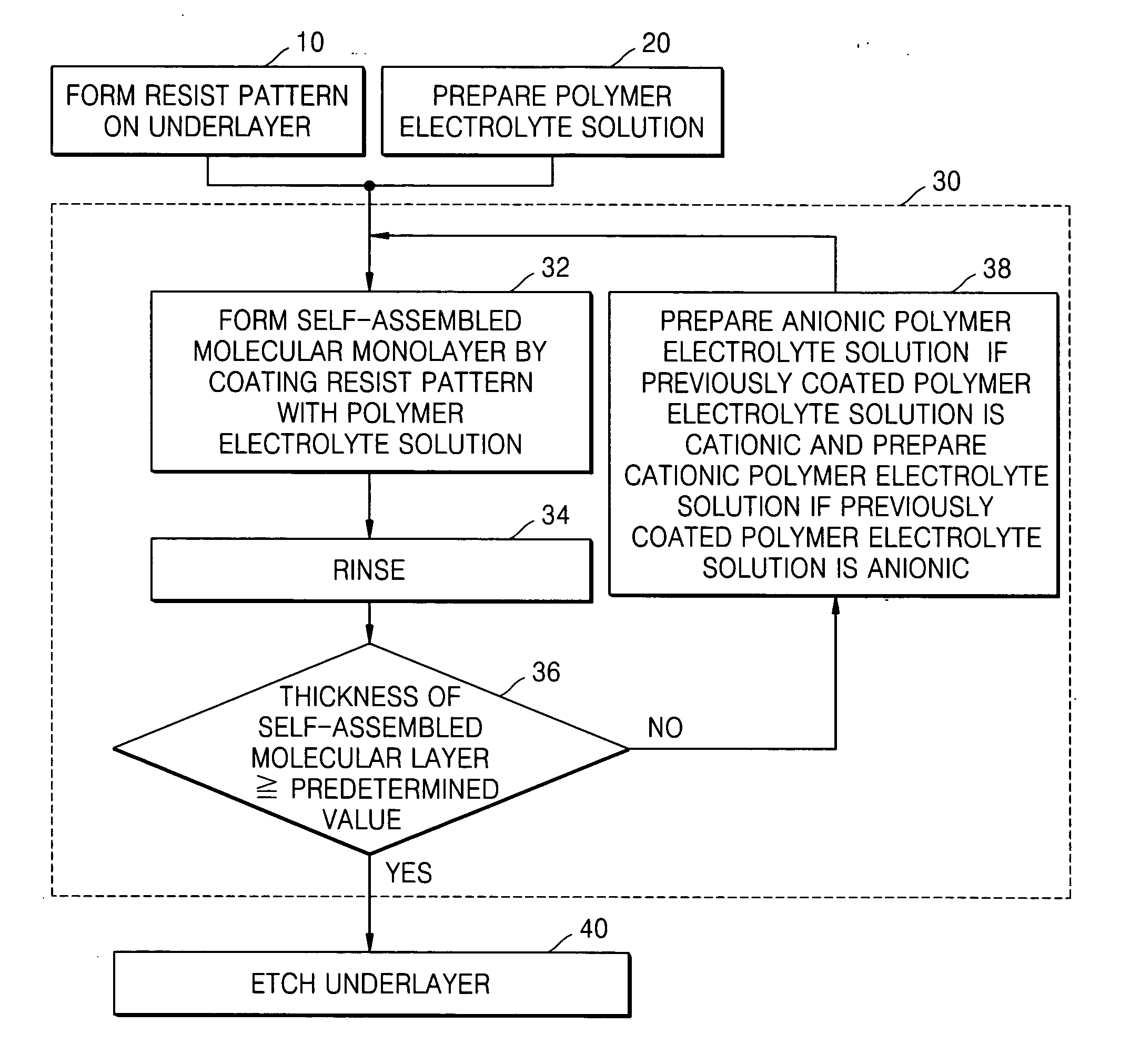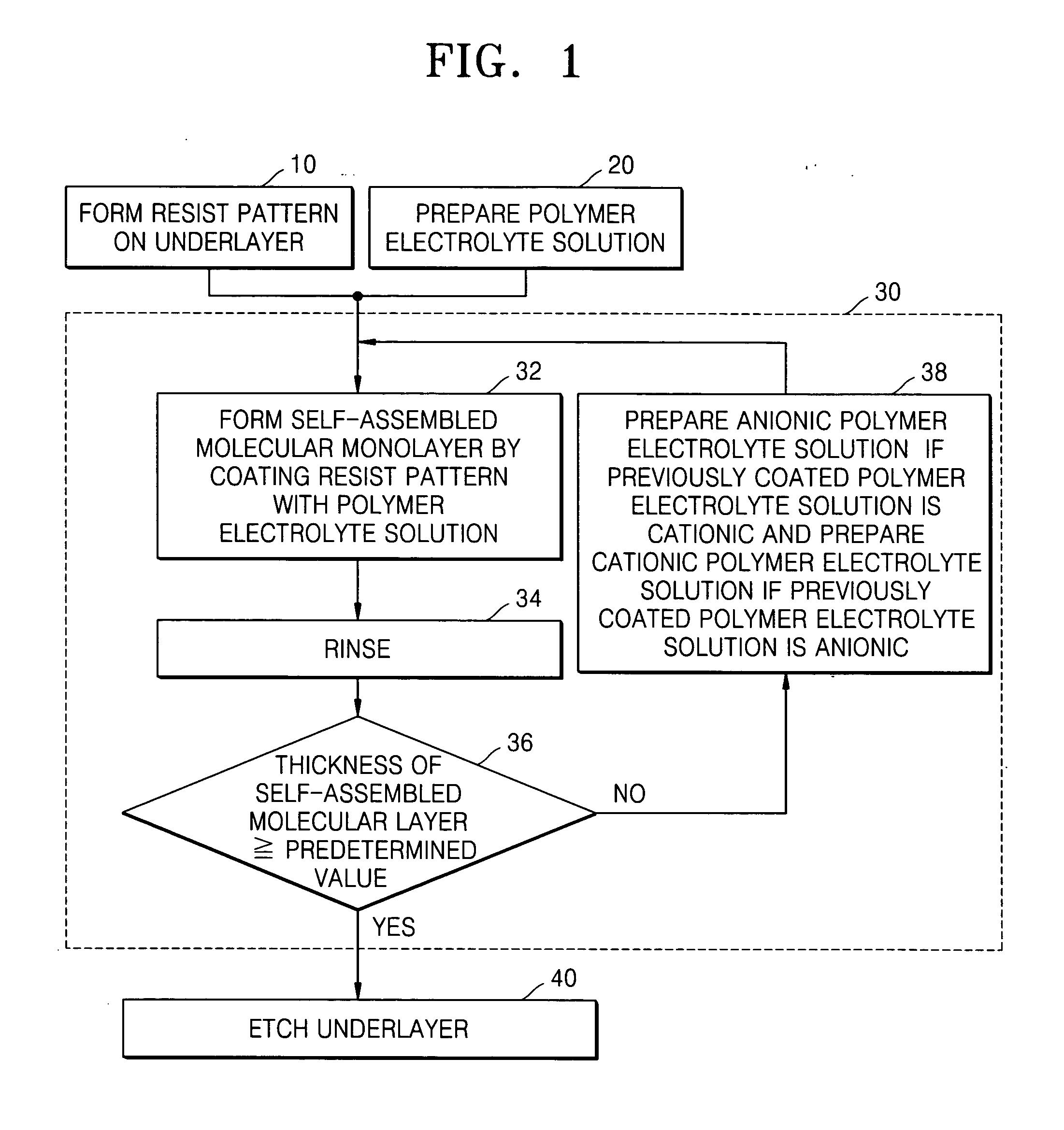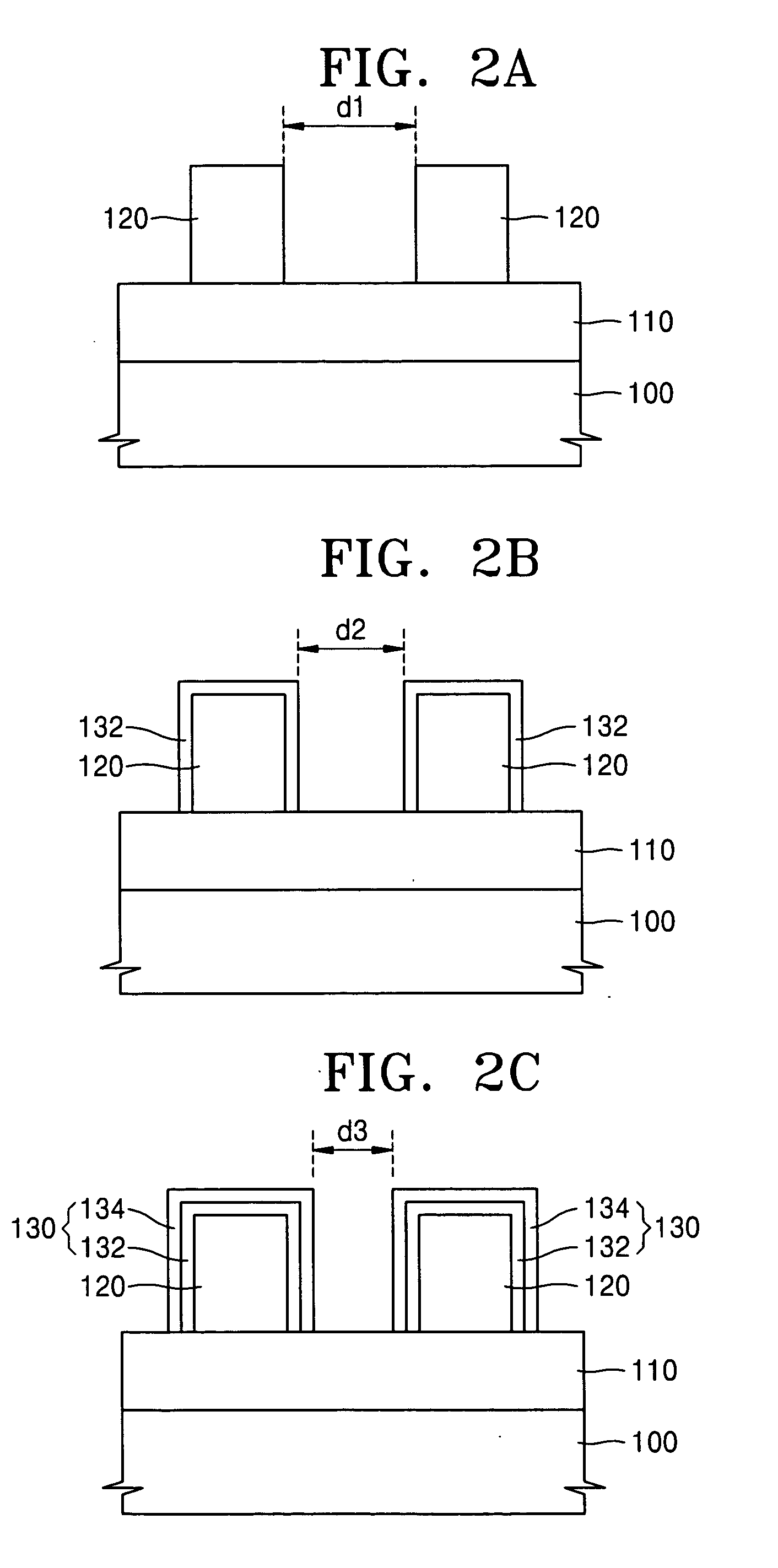Mask pattern for semiconductor device fabrication, method of forming the same, and method of fabricating finely patterned semiconductor device
a semiconductor device and mask pattern technology, applied in the field of mask pattern for fabricating semiconductor devices, can solve the problems of material-dependent and uneconomical, short-wavelength exposure tool based lithography, material-dependent and uneconomical, etc., and achieve the effect of reducing the width of the opening
- Summary
- Abstract
- Description
- Claims
- Application Information
AI Technical Summary
Benefits of technology
Problems solved by technology
Method used
Image
Examples
example 1
[0078] An organic antireflective film (DUV-30, Nissan Chemical Industries, Ltd.) was formed to a thickness of 36 nm on a bare silicon wafer and a photoresist (SAIL-G24c, ShinEtsu Chemical Co. Ltd) was coated thereon to form a resist film with a thickness of 240 nm. The wafer, on which the resist film was formed, was subjected to soft baking, followed by exposure with ArF (193 nm) stepper (Nikon S306C) specified with numeric aperture (NA) of 0.75 (annular illumination: 0.85-0.55) and 24 mJ / cm2 exposure light energy, and post-exposure baking (PEB). Then, the wafer was developed with a 2.38 wt % tetramethylammonium hydroxide (TMAH) solution to form, on the wafer, a resist pattern with openings having a CD (critical dimension) of 116.8 nm.
[0079] 3 ml of an aqueous solution of 1,000 ppm branched polyethyleneimine used as a cationic polymer electrolyte solution was spin-coated on the resist pattern at 1,000 rpm for about 30 seconds to obtain a mask pattern with openings having a smaller ...
example 2
[0081] A mask pattern with openings having a CD of 103.4 nm was formed in the same manner in Example 1 except that an aqueous solution of 5,000 ppm branched polyethyleneimine was used as the cationic polymer electrolyte solution.
example 3
[0082] A resist pattern with a CD of 116.8 nm was formed on a wafer in the same manner as in Example 1. Then, 3 ml of an aqueous solution of 1,000 ppm branched polyethyleneimine used as a cationic polymer electrolyte solution was spin-coated on the resist pattern at 1,000 rpm for about 30 seconds and then rinsed with deionized water.
[0083] 3 ml of an aqueous solution of 1,000 ppm poly(styrene-4-sulfonate) used as an anionic polymer electrolyte solution was spin-coated at 1,000 rpm for about 30 seconds and then rinsed with deionized water to obtain a mask pattern with openings having a smaller CD of 106.1 nm.
[0084] 3 ml of an aqueous solution of 1,000 ppm poly(diallydimethyl ammonium chloride) used as a cationic polymer electrolyte solution was spin-coated on the mask pattern at 1,000 rpm for about 30 seconds and then rinsed with deionized water.
[0085] 3 ml of an aqueous solution of 1,000 ppm poly(styrene-4-sulfonate) used as an anionic polymer electrolyte solution was spin-coated...
PUM
| Property | Measurement | Unit |
|---|---|---|
| temperature | aaaaa | aaaaa |
| size | aaaaa | aaaaa |
| time | aaaaa | aaaaa |
Abstract
Description
Claims
Application Information
 Login to View More
Login to View More - R&D
- Intellectual Property
- Life Sciences
- Materials
- Tech Scout
- Unparalleled Data Quality
- Higher Quality Content
- 60% Fewer Hallucinations
Browse by: Latest US Patents, China's latest patents, Technical Efficacy Thesaurus, Application Domain, Technology Topic, Popular Technical Reports.
© 2025 PatSnap. All rights reserved.Legal|Privacy policy|Modern Slavery Act Transparency Statement|Sitemap|About US| Contact US: help@patsnap.com



